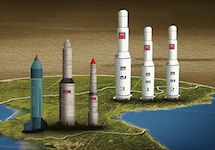May 30, 2017
Daniel Salisbury
This article was originally published through the Project on Nuclear Issues Forum on May 19, 2017.
North Korea successfully tested a new intermediate range ballistic missile on Saturday – the Hwasong-12. Images released by the country’s state media suggest that the test involved a more advanced missile first revealed at a military parade in Pyongyang last month. Since assuming power in 2011, Kim Jong-Un has embarked on an extensive program of missile tests. The “substantial advance” showcased in this recent test, and the DPRK’s accelerating program more generally, raise questions about the effectiveness of technology-based sanctions as a nonproliferation tool.
Pyongyang’s missile program has been a source of concern for the United States and the international community since the 1990s. This concern has grown as North Korea progresses toward testing an intercontinental ballistic missile (ICBM) that could carry a nuclear warhead to the continental United States. A North Korean ICBM test, pending any shock developments, seems to be an increasingly likely prospect in the coming years.

